Germany’s Oldest Air Show
Berlin – David Oliver 2016
The biennial ILA Berlin Air Show held at the Berlin ExpoCenter at Schönefeld Airport, is Germany’s major trade exhibition for the aerospace and defence industries with a public airshow. Established in 1909, it claims to be world’s oldest air show. From 1 to 4 June 2016 a wide range of the latest hi-tech products as well as research and development projects were displayed by the 1,017 exhibitors from 37 countries. During the four-day event, 150,000 trade visitors and members of the public visited the Berlin ExpoCenter. Some 200 aircraft were featured in the static and flying displays and high-ranking delegations from Germany and around the world also attended the show plus 3,300 journalists from 50 countries.
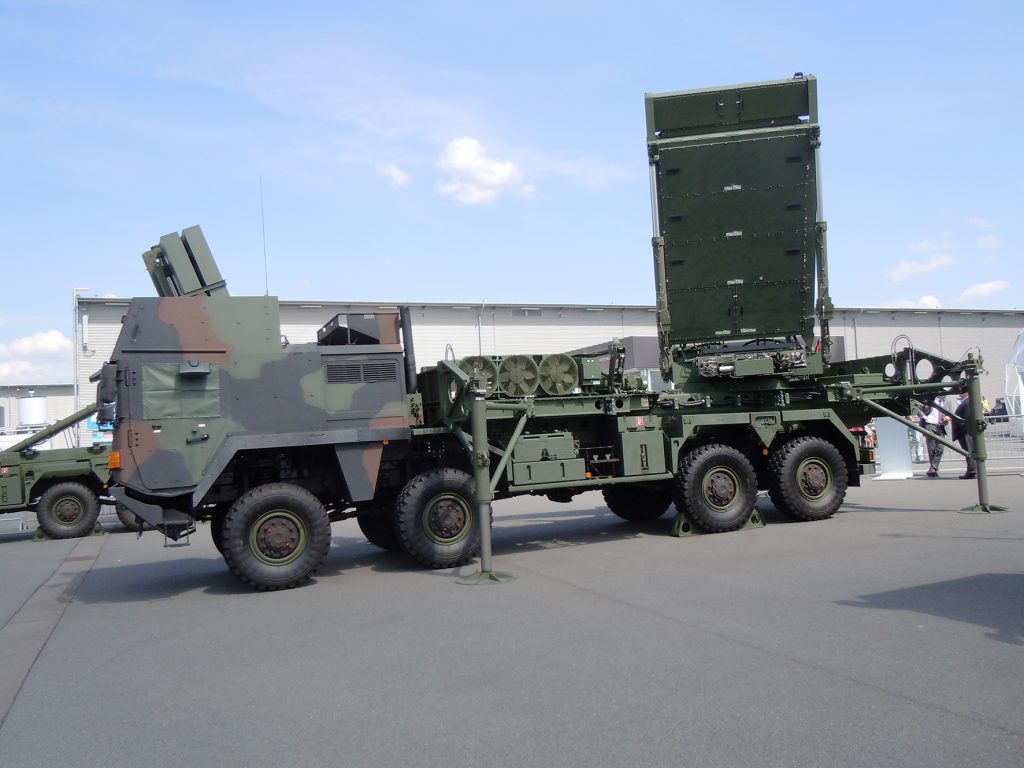
The majority of the trade exhibitors were German companies or multinational firms with German facilities. MBDA Deutschland had a heavy presence ay ILA 2016 with a range of air defence and guided missile programmes. These included the Tactical Air Defence System (TLVS) based on the Medium Extended Air Defense System (MEADS) for which development was concluded at the end of 2014.
MEADS was developed in Germany, Italy and the USA by MBDA and Lockheed Martin. After the conclusion of successful live-fire trials at the White Sands Missile Range in New Mexico, during which simultaneous dual intercepts were carried out, the German Defence Ministry issued a request of proposal (RfP) in February. Thomas Homberg, MD of MBDA Deutschland told EDR that the radar and communications systems will be defined before the end of 2016 while MBDA and Lockheed Martin are looking for other interested parties with a requirement for tactical air defence systems including Italy, Poland and Turkey.
At the other end of the air defence scale, MBDA is developing a counter unmanned aerial vehicles (C-UAV) system. The laser system features a 360-degree beam guidance system that can be integrated on both land and sea platforms and can also be used against rockets and mortar shells with and effective range of between 3 and 5 km. MBDA also highlighted its portfolio of air-launched missiles including METEOR Beyond Visual Range (BVR) air-to-air missile which is about to enter service with the Swedish Air force’s Gripen C/D fleet, followed by Eurofighter Typhoon and Rafale. The Storm Shadow deep strike missile has also been cleared for operational release on the Typhoon and integration of MBDA’s Brimstone precision attack missile is on contract for Eurofighter.
Another multinational giant with more than a dozen locations in Germany is the Airbus Group. The two main programmes of its Defence & Space division are Eurofighter Typhoon of which it is the lead partner company, and the A400M tactical airlifter, both of which took part in the ILA flight displays. The former has recently had a boost with sales to Kuwait and although it missed out in Denmark, it is turning its attention to Belgium and in the longer term, Switzerland. However, the A400m is beset by gearbox problems with its complex EuroProp TP-400 turboprop engines developed by Avio, ITP, MTU, Rolls-Royce and SNECMA, and its inability to be used to air-refuel helicopters. These problems will have to be addressed before more export sales materialize.
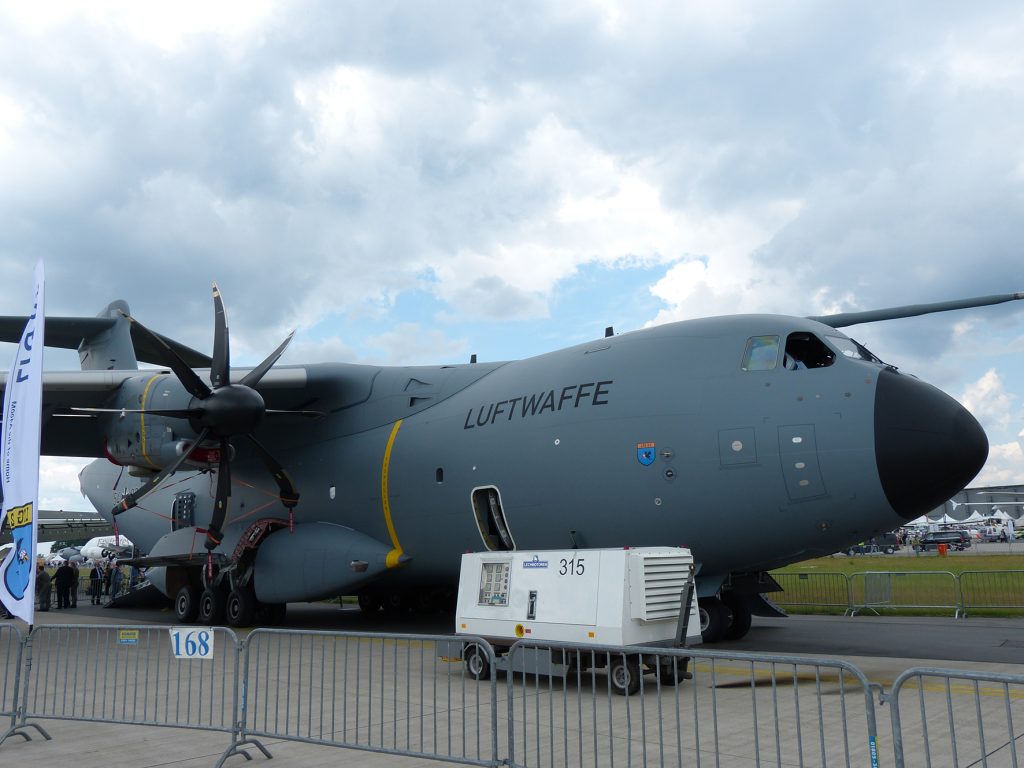
A significant division of the Airbus Group on both sales revenue and marketing success is Airbus Helicopters. Centred at Marignane in France, and Donauworth in Germany, the company also faces a number of challenges. Guillaume Faury, its chief executive officer admitted to EDR that the helicopter market was down in 2015, and very weak in 2016, which reflected the downturn in the oil and gas industry. Airbus Helicopters turnover is expected to 50 percent civil and 50 percent military this year with the military sector on the way up. A fatal accident involving a CHC EC225 Super Puma in the North Sea is also a major setback. Guillaume Faury said that the company was co-operating with the AIB and with a number of the helicopter’s vital components still being searched for, there can be no definitive resolution to this tragic event.
Guillaume Faury went on to highlight some of the company’s recent military successes including the £500 million UK Military Flying Training System (MFTS) contract for 29 H135 and 8 H145 helicopters, H225M Caracal sales to Kuwait, and selection by Poland although this decision is now being reassessed. The NH90 helicopter has attracted recent sales to Qatar and the first of 18 NH90 Sea Lions for the Germany Navy will make its first flight by the end of this year.
With regard to the Luftwaffe’s requirement to replace its fleet of Sikorsky CH-53G heavy lift helicopters, the main contenders are Sikorsky with its new CH-53K and Boeing’s CH-47F/ER. Airbus Helicopters does not plan to enter the heavy lift market but is confident that it can work with either US company and the Luftwaffe with maintenance, upgrades and support for the selected platform.
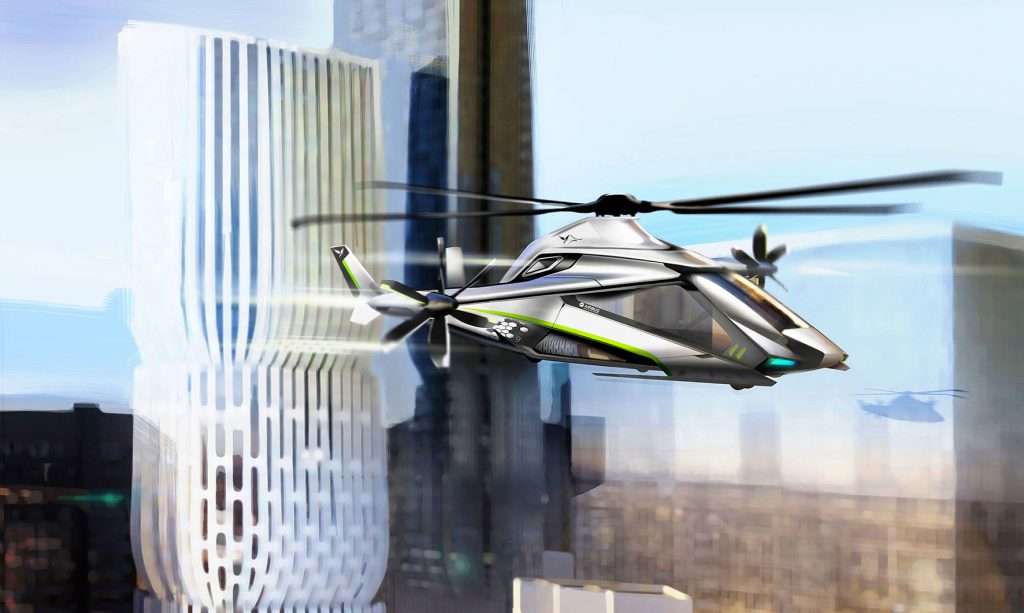
Airbus Helicopters earlier this year passed an important milestone in the development of the high-speed, compound helicopter demonstrator currently being built as part of the Clean Sky 2 European research programme. A mockup has just undergone wind tunnel testing in an Airbus facility which proved the viability of the chosen design in terms of efficiency, sustainability and performance, paving the way for a preliminary design review expected end of 2016.
Building on the achievements of the company-funded and record-breaking X3 technology demonstrator, the Airbus Helicopters Clean Sky-demonstrator will help refine the “compound” aerodynamic configuration and bring it closer to an operational design, with the end objective of meeting future requirements for increased speed, better cost-efficiency, as well dramatic reductions of emission and acoustic footprints. Flight-testing of the prototype is expected to start in 2019.
Guillaume Faury stressed that this would be a true helicopter, designed for high speed for the mass market capable of flying at 220 kt (410 km/hr). It will be a medium size helicopter for EMS, SAR and paramilitary applications that should offer a 50 percent speed increase for only 20 percent more cost. The demonstrator will be twin-engined, both of which would be used for take-off, and one for cruise mode. It will be scalable for all types and size helicopters. The EU-backed Clean Sky 2 project is focused on reducing footprint, noise and a 40 percent reduction in emissions with a 15 percent reduction in power.
While the core companies remain focused on aerospace manufacturing, one of its subsidiaries is being rebranded. The newly formed company, Airbus DS Electronics and Border Security (EBS), offers key sensor technologies from a single source. The new sensor specialist is publicly unveiled as “The new Sensor House” at ILA. EBS combines the different Airbus activities in security and defence electronics and develops innovative products for reconnaissance and intelligence, the protection of soldiers and combat. The Airbus Group has concluded an agreement with the investment company KKR for the sale of 74.9 percent of the EBS shares to KKR. The agreement is subject to approval from the Competition and Markets Authority (CMA) and is expected to take effect by the first quarter of 2017 at the latest. Thereafter, the company will appear under the brand name “Hensoldt” following the tradition of a German pioneer of sensor technology whose name stands for the combination of innovation and efficiency.
At ILA, Airbus EBS presented its latest developments in the area of sensor technology including the ASR, the world’s most powerful airport surveillance radar, the TRS-4D naval radar system, being installed on the new German Navy frigates, and the MILDS missile warning sensor, which is the leading warning sensor for helicopters and wide-body aircraft.
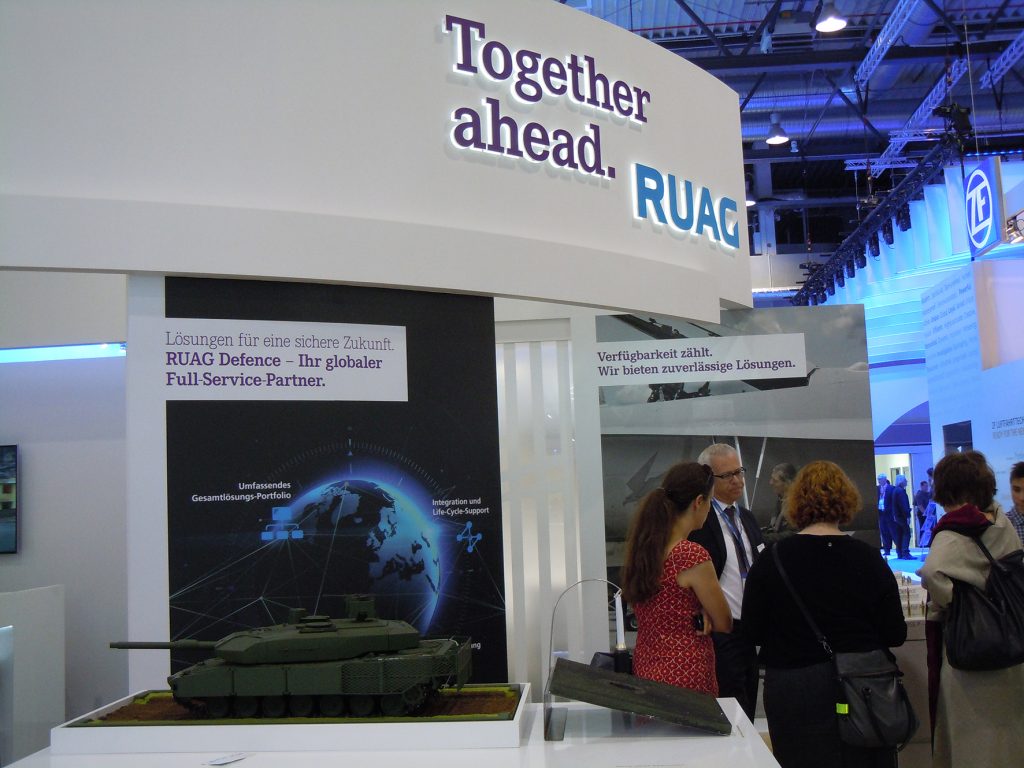
Another company with a large workforce in Germany is RUAG. Apart from displaying its Dornier 228 New Generation aircraft which is now in low-rate production in RUAG Aviation’s Oberpfafenhofen facility, the company holds the design authority for the extant fleet of D0 228 aircraft worldwide carrying out maintenance, repair and overhaul (MRO). RUAG also carries out MRO for Swiss Air Force aircraft including the F/A-18C/D Hornet F-5E/F aircraft and Super Puma helicopters. It manufactures Pilatus PC-21 airframes and components for Gripen and Rafale aircraft.
RUAG Defence has unveiled its digital mid-life upgrade of the Leopard 2A4 Main Battle Tank and is professional partner of the German Armed Forces and Police carrying out MRO for the M109 howitzer and CV9030 armoured vehicles and providing live simulation training systems.
There is a growing global market for low-cost ISR platforms and one of the more interesting examples was being showcased at ILA. Designed by the former CEO of Stemme AG, Dr Reiner Stemme, the Q01 optionally piloted vehicle (OPV) has been financed by Qatar following the signing of an €89 million agreement between the Qatar Armed Forces (QAF) and the German company Reiner Stemme Utility Air-Systems (RS-UAS).
Directing the projected is Brigadier General Khalid Ahmed Al-Kuwari, head of the QAF UAV Committee, who told EDR that he wanted a long-cost, lightweight adaptable platform designed for a variety of airborne surveillance missions. Gen Al-Kuwari said that the QAF has a requirement for 17 Q01 platforms and the first delivered will be made in 2017.
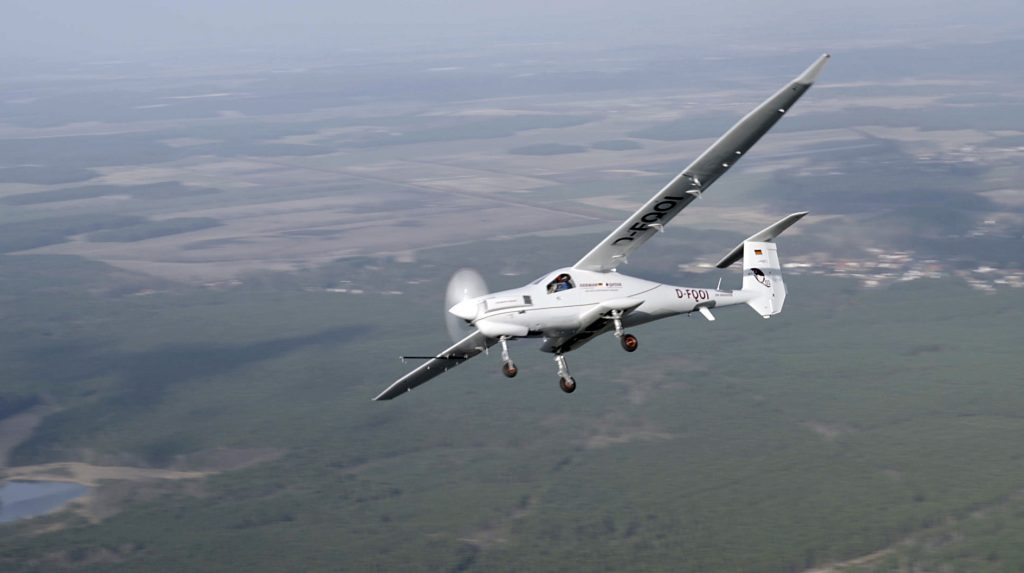
The carbon composite aircraft is powered by a Technify/Continental turbocharged IC 310 hp engine that can use both JET A1 or Diesel fuel, with a three blade constant speed propeller. Its 20 metre span wing is a development of Dr Steiner’s high-aspect ratio laminar wing design also used on the French Sagem Patroller UAV. Cruising at 190 knots the manned version of the Q01 can fly up to 12 hours or 50 hours unmanned, carrying a 600 kg payload that includes a Thales Searchmaster radar, a L-3 Wescam MX-20 EO/IR sensor and a DLR Modular Aerial Camera System (MACS) on one of its four underwing pods. These pods can also be used for additional fuel.
Thales new Searchmaster airborne surveillance radar selected for the Q01, was developed for the French Navy’s ATL2 MPA upgrade, has completed its six-month flight test programme and will be available for export in 2017. The active electronically scanned array (AESA) radar offer high levels of land and sea threat detection meeting the requirement of five missions, anti-submarine, anti-surface warfare, maritime patrol, air-to-ground missions and tactical air support.
Other Thales aerospace products of display at ILA included the Scorpion helmet mounted Cueing System (HMCS) which will be installed in Spanish Air Force EF-18 combat aircraft in 2017. The system, which offers full colour symbology for both day and night missions in degraded visual environments, is in operational use in the USA.
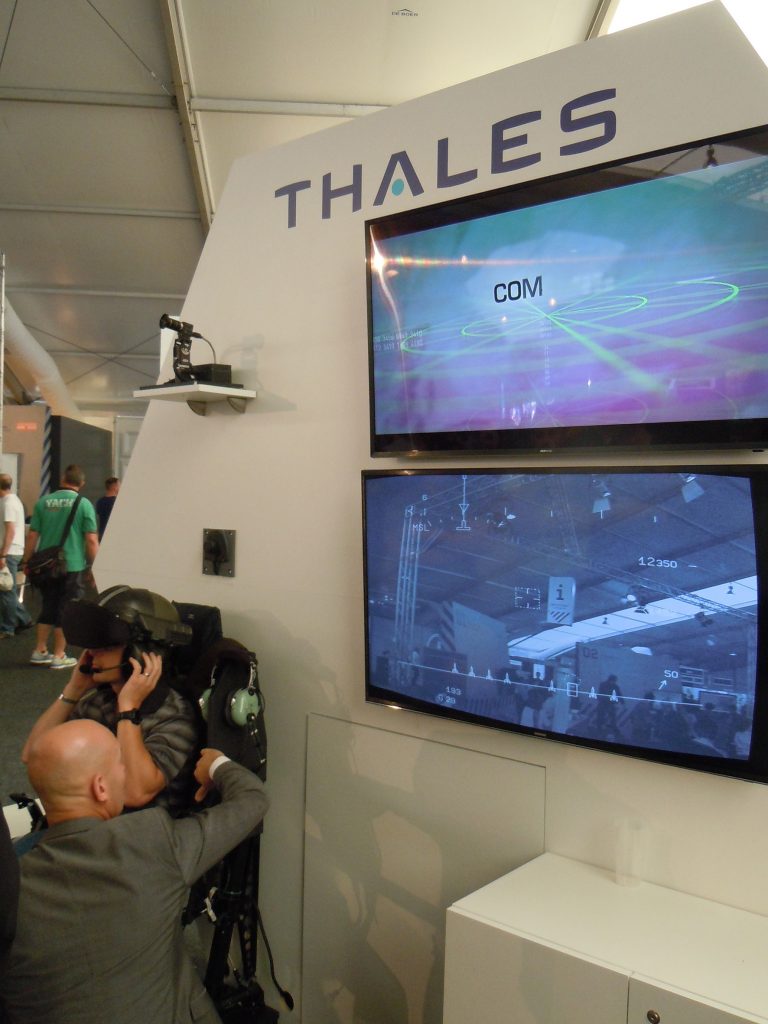
With the Air Maneuver Training Alliance (AMTA), Thales displayed its TopOwl helmet-mounted sight and display for helicopters which provides the pilot with visor-projected night vision from any sensor located in the aircraft. It is standard equipment for the French Army Tiger aircrew.
To sum up the impact of ILA 2016, it was largely a German air show to showcase its air force and army aviation, and its substantial aerospace industry, but in these uncertain times, it may be difficult for its oldest air show to survive in its present form.
